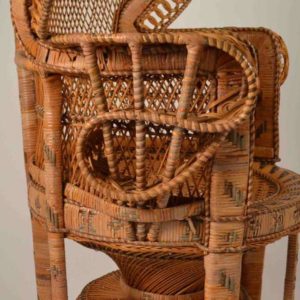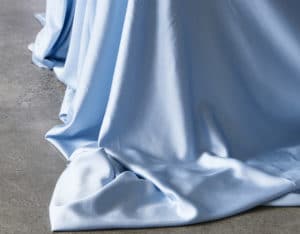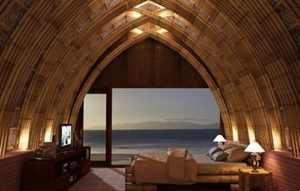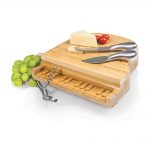How can you tell if your bamboo bedding, towels, or clothes are still bamboo?
Bamboo fabrics are more popular than ever and with good reason! There are many healthy benefits associated with bamboo bed sheets, towels and clothes.
While many of these products are exactly what they claim to be, not all “so-called” bamboo fabrics have any of the healthy properties left in them. This is because the process used to create the fabric is so highly toxic that it kills those properties as well as pollutes the environment.
Remember, just because its soft and more expensive doesn’t automatically mean that it’s still bamboo.
But how can you tell the difference? This article will explore how you can sort through the hype and help to identify the good stuff from the bad.
What is it really made of?
Look at the label on any of your bed sheets or clothes. It will tell you the percentage of the type of fibers that make up the fabric.
In the case of bamboo fabric products you’ll see something like:
- “Bamboo”
- ”100% Bamboo”
- “30% Bamboo 70% Cotton”
- “Rayon Bamboo”
- “Viscose Bamboo”
- “Lyocell Bamboo”
But what does that mean?
This is where the Federal Trade Commission (FTC) comes in.
The FTC has had it’s hands full of companies eager to jump on the lucrative bamboo trend who have been incorrectly labeling their clothing and other bamboo textiles with simplistic labels: “Bamboo” or “100% Bamboo”.
In doing so it was determined that these companies were deceiving the public by not disclosing the method that was used to make it thus perpetuating a false notion that they are natural, anti-bacterial, and environmentally sensitive fabrics. This is a big deal if you want your bamboo sheets to actually be bamboo and have the healthy properties that you’re expecting.
For example, if a fabric is labeled 100% bamboo then legally it means that the company must use 100% bamboo fiber in their products – 100%.
However, “100% bamboo fiber” is NOT soft. Fabric made from 100% bamboo fiber will feel rough to the touch much like canvas. If it feels super soft, then it’s NOT 100% bamboo and cannot legally be called bamboo at all according to the FTC but many manufacturers still do it.
Also, the FTC requires companies who manufacture bamboo textiles to start the label with the actual process used such as: “Rayon from Bamboo”, “Viscose Bamboo”, or “Lyocell of Bamboo”. Right, like that happens a lot.
It’s All About How It’s Made
To understand these labels we first need to understand more about the process of making these types of rayon textiles.
All soft bamboo fabrics are part of the rayon family. It sounds like plastic but rayon, modal and lyocell are not synthetic fabrics (petroleum-based like polyester or nylon). However, they’re not strictly natural either in that the process used to create the fibers doesn’t come directly from an animal like wool, or from plant fibers such as hemp, jute, cotton or flax (linen). They land somewhere in between – they are “regenerated” fibers.
It all starts with cellulose – a natural polymer that makes up the living cells in all plants. Cellulose is what makes rayon, modal, and lyocell fabrics feel silky. The cellulose is extracted from plants (mostly trees and more recently bamboo) by taking the woody part of the plant, crushing it and mixing it with either a natural enzyme, or with toxic chemicals to create slurry.
This slurry is then passed through a spinneret and extruded through a device much like a shower head to create the soft fibers that are converted (regenerated) into nearly pure cellulose. This is called the “viscose process”. The fibers are then dried, milled, and fluffed. Next, they are dyed and spun into threads that are woven into fabrics.
There are three generations of rayon technology: Rayon, Modal and Lyocell depending on the process used. The difference between Rayon, Model and Lyocell:
1. RAYON is the first generation of these (regenerated) cellulosic fibers. It was originally manufactured in 1855. In the 1890’s it was called “art silk” (abbreviation for “artificial silk”) which is very silky and soft but much less expensive than real silk.
Rayon is easily dyed, more moisture absorbent than cotton, it’s breathable and drapes well, plus it doesn’t hold static electricity. It is also known as “viscose rayon”.
Sadly, the traditional rayon process uses a harsh chemical method for breaking down the plant that is notorious for dumping pollutants into the air and water.
When this chemical process is employed on bamboo or some other woody plant as the source, the results are as follows:
- NO trace of the original plant is left in the finished rayon product
- NO natural antimicrobial properties will remain from plants like bamboo.
- Chemicals will actually get added back in to control the bacteria on the finished product!
Many companies falsely claim that their bamboo fabric products have healthy properties in their advertising but in reality they do not. It might have started out with bamboo cellulose but all the good stuff was chemically burned out of it in the process.
2. MODAL is the second generation of cellulosic fibers. Modal was originally developed in 1951 in Japan.
A company named “Lenzing” started selling modal in 1964. In 1977 they began using an environmentally friendly bleaching method in the process. Lenzing Modal® is made from sustainably harvested beech trees.
Modal has a high wet strength and is ultra soft. It’s especially great for lingerie and under garments. When machine-washed and tumble dried the fibers are more stable and won’t shrink or stretch out of shape like some rayon will. The colors will also stay more vivid with less graying over time unlike 100% cotton. It is often blended with cotton, wool or other synthetic fibers.
3. LYOCELL is the third generation of the cellulosic fiber process and is the most environmentally friendly. The lyocell process was developed by Lenzing in 1990 and sold under the brand name Lenzing Tencel® or simply Tencel®.
The cellulose structure of lyocell is much closer to that found in nature because it is done with a closed loop process creating a “solvent spun fiber”.
The solvent used in lyocell is amine oxide, is non-toxic while also breaking down the wood pulp. It about 99% recovered and recycled in a closed loop system during the manufacturing process. The leftover waste products that are released into the air and water are minimal and considered harmless.
Lyocell products are considered biodegradable and will usually take only about 8 days to degrade in waste treatment plants. They can also be recycled or incinerated without harming the environment unlike chemically created rayon or other synthetic fabrics.
Lyocell clothing has many healthy properties:
- The fabric will absorb moisture and then release it into the air (unlike synthetics) keeping the body temperature steady. This means that wearing or sleeping on this fabric will keep you cool in the summer and warm in the winter.
- Since it is 50% more moisture absorbent than cotton and even more so than wool, it prevents the growth of bacteria that cause odors without the addition of chemicals. Clothes will be bacteria-free longer thus reducing washings.
- It is hypoallergenic and is excellent for those with allergies, psoriasis, and other sensitivities.
- It is anti-static so it doesn’t cling.
What to look for on the label
GOOD:
Ideally, you want to see the words “Lyocell Bamboo” or Tencel® somewhere on the label. Also if you happen to see “Oeko-Tex” on the label it means that the crop from which the bamboo originally came from has been certified by the “Organic Crop Improvement Association” – which is really good.
NOT GOOD:
If the label reads: “100% Bamboo” (and it’s super soft), “Rayon of Bamboo”, or simply “Bamboo” then it’s 99% certain that there’s no bamboo left in it. Although the cellulose might have technically started out as bamboo, by the time the viscose process was completed all the bamboo has been cooked out of it.
The Bottom Line
Bamboo is trending at a crazy pace on the green market right now. Check the label. Prices on bamboo sheets, towels, and clothing can vary wildly so make sure you know that what you’re buying is still bamboo and actually eco-friendly.
If you want the good stuff, the environmentally friendly, real deal bamboo with the healthful properties still in place stuff, make sure it says “Lyocell” on the label and was manufactured in the U.S. or Europe.










 Bamboo fabrics natural anti-bacterial, anti-fungal and antistatic properties when properly processed. While other types of fabrics use chemical anti-microbial agents that can cause skin irritations as well as allergic reactions, bamboo fabric products do not need or use these chemicals – it’s already in the plant!
Bamboo fabrics natural anti-bacterial, anti-fungal and antistatic properties when properly processed. While other types of fabrics use chemical anti-microbial agents that can cause skin irritations as well as allergic reactions, bamboo fabric products do not need or use these chemicals – it’s already in the plant! Bamboo will stay 2-3 degrees cooler in hot weather and stay warmer in the cold. Bamboo flooring has been keeping the chill off the feet of those who’ve walked on it for thousands of years.
Bamboo will stay 2-3 degrees cooler in hot weather and stay warmer in the cold. Bamboo flooring has been keeping the chill off the feet of those who’ve walked on it for thousands of years.







